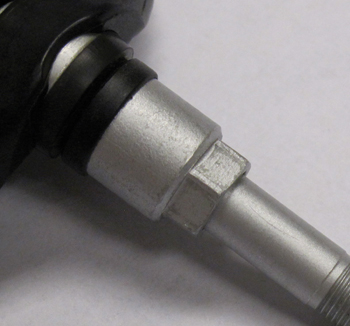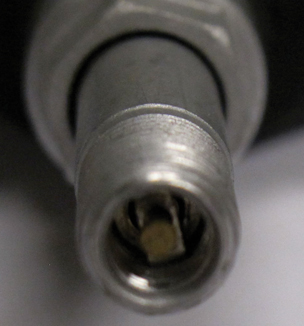 Every time a stem-mounted TPMS sensor is removed from a rim, it must be serviced, no ifs, ands or buts. This goes for sensors that are six months old to six years old. Some drivers may complain, but it is a lot better than having them comeback with the TPMS light on.
Every time a stem-mounted TPMS sensor is removed from a rim, it must be serviced, no ifs, ands or buts. This goes for sensors that are six months old to six years old. Some drivers may complain, but it is a lot better than having them comeback with the TPMS light on.
The typical kit includes a nut, valve core, grommets and valve cap. Each component has a specific function and lifespan that is not only determined by time, but what happens when it is installed.
TPMS nuts are designed in anodized aluminum to eliminate the contact of two dissimilar metals that would create galvanic corrosion and material deterioration. The nut has a bonded lubricant to help provide the proper torque required for seating a new grommet, in addition to the engineered advantages.
If a nut is reused, the anodized surface maybe scratched away and corrosion may occur between the sensor, wheel and stem. It may even make the nut impossible to torque to the correct specifications or remove due to corrosion on the threads.
On the sensor and nut, two grommets seal the sensor and nut to the wheel. Grommets conform to the mating surface of the rim. The instant the nut is torqued, it starts to take on the shape of the surfaces it is sealing against. This memory can not be erased. If the seal is reused, it could cause a slow leak.
The leak can not be eliminated by tightening the nut even more. Extra force may damage the nut, stem or fracture the  sensor body.
sensor body.
Most technicians replace the valve stem went they are installing new tires; this is standard operation procedure. Replacing the valve stem core serves the same purpose and an additional reason. The elastmeric rubber and plastics degrade over time due to heat. The valve stem is subjected to heat from both the brakes and road.
The valve core is nickel-plated and prevents galvanic corrosion and ensures integrity of the primary seal. To prevent galvanic corrosion, never use a brass valve core with an aluminum TPMS sensor. Instead, always use a nickel-plated valve core with an aluminum TPMS sensor. It is usually the correct one in the kit. If the wrong valve core is used, accelerated galvanic corrosion could result in the core becoming “frozen” and seized, stuck in the stem and unable to be removed. Also, TPMS valve cores have special Teflon coatings that help seat and seal the stem.













